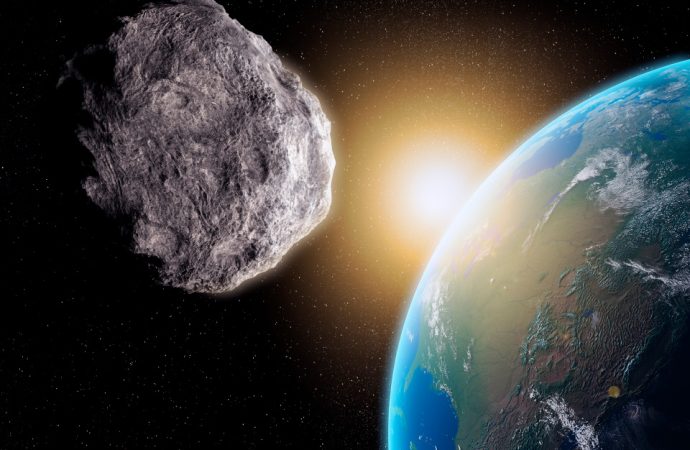Space agency says a number of huge space rocks will speed past our planet in the coming months
NASA has spotted five asteroids which will make a close approach to the Earth this year.
One of the space rocks will come within 0.15 lunar distances to our planet – a terrifyingly small distance.

The space agency made the predictions on its asteroid detection site.
It has a team of scientists regularly monitoring space rocks and keeping tabs on anything that might pose a threat to our planet.
NASA said the first close encounter will come on July 23, when asteroid 2017 BS5 will come within 3.15 lunar distances (752,937 miles) of Earth.

It is estimated to be 90 metres in diameter.
The biggest risk of collision will come on October 12, when the 27 metre asteroid 2012 TC4 will swish past at 0.15 lunar distances – just 35,828 miles away.
There’s no suggestion that these rocks will crash into our planet.
But if an asteroid were to strike – and some experts believe we are due an extinction-level event of this type – it’s likely that it would hit water.
Award winning video shows what would happen if an asteroid struck Earth

The above animation from the folks at Los Alamos National Lab reveals exactly what might happen if it did.
The scientists wanted to figure out whether huge waves as a result of the impact would be large enough to travel to populated coasts and destroy cities.
Their study found that it’s unlikely that it would wipe out civilisation, Deep Impact-style.
But it could cause huge water vapours to hurtle into the stratosphere – causing total climate chaos.
Galen Gisler, who used a supercomputer to create the animation, said: “The most significant effect of an impact into the ocean is the injection of water vapour into the stratosphere, with possible climate effects.”
Source: Sun News

































Leave a Comment
You must be logged in to post a comment.